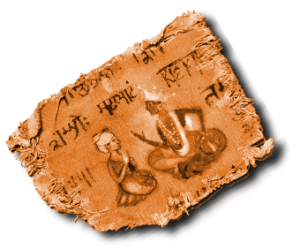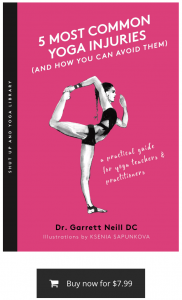Practice, practice, practice.
Practice and it will come.
All it takes is practice.
The above are phrases that any one remotely interested in yoga, or meditation for that matter, has heard before. What they most often imply, is that with enough time and dedication, something “magical” will happen. This “magical” state is often something along the lines of the practitioner’s body becoming so flexible that they are now able to place their foot behind their head, or their mind becoming so empty of thoughts that they can hear bells ringing.
Does that sound familiar?
Even though those states might indeed be possible for some individuals, in most cases they do not even come close to actuality.
Swāmi Vivekānanda, the great Indian monk who lived from 1863 – 1902, in the book Rāja-Yoga (pg. 18) states:

“Anything that is secret and mysterious in this system of Yoga should be at once rejected. The best guide in life is strength. Discard everything that weakens you; have nothing to do with it. Mystery-mongering weakens the human brain. It has wellnigh destroyed yoga, one of the grandest of sciences. From the time it was discovered, more than four thousand years ago, yoga was perfectly delineated, formulated, and preached in India. It is a striking fact that the more modern the commentator, the greater the mistakes he makes, while the more ancient the writer, the more rational he is. Most of the modern writers talk of all sorts of mysteries. Thus yoga fell into the hands of a few persons who made it a secret, instead of letting the full blaze of daylight and reason fall upon it. They did so that they might have the powers to themselves.”
Today, we are the witnesses of the above quote manifesting itself in several forms.
Alignment
In the realm of Hatha yoga, several self-proclaimed gurus for the last 50 years or so have been imposing the concept of the alignment of the pose. Their sheer intention has been that of “creating a beautiful salad” out of the old and simply described archetypes of yoga poses so that the intellectual westerners will be impressed and become interested in them. Science is proving over and over that even though the “alignment of the pose” may be relevant for certain poses and certain individuals, it can be detrimental to a wide range of the population.

Sanskrit
The use of the Sanskrit language has been incrementally viewed as the only way to develop of strong yoga or meditation practice. Students invest a significant amount of time and money in order to add Sanskrit words or mantras to their vocabulary, or even further, to receive a spiritual name.
Even though Sanskrit is a wonderful language, it is no more or less powerful than any other old language human beings have developed and used. It is also vital to keep in mind that words are considered by both science and old traditions as the “grossest” form of human expression and communication.

The Teacher Will Appear
“When the student is ready, the teacher will appear.” Even though this yoga meme can have a lot of truth to it, it is something that is, more often than not, being abused by teachers and students alike. It is very often manifested when the student is afraid to take responsibility and ownership of their situation. They are not satisfied with where they are at, but they would rather have someone else “do the work for them.” They end up giving their power away to the “teacher” in hopes of something magical, such as anywhere from cleansing through auspicious herbs and blessed mālā beads to karma removal ceremonies.

Going back to Swāmi Vivekānanda’s wise words:
“… it is wrong to blindly believe. You must exercise your own reason and judgment; you must learn from experience whether these things happen or not. Just as you take up any other science, exactly in the same manner you should take up this science [yoga] for study. There is neither mystery nor danger in it. So far as it is true it ought to be preached in the public streets in broad daylight. Any attempt to mystify these things is productive of great danger.”
And the list continues. Part II will explore more of the modern yoga myths.


